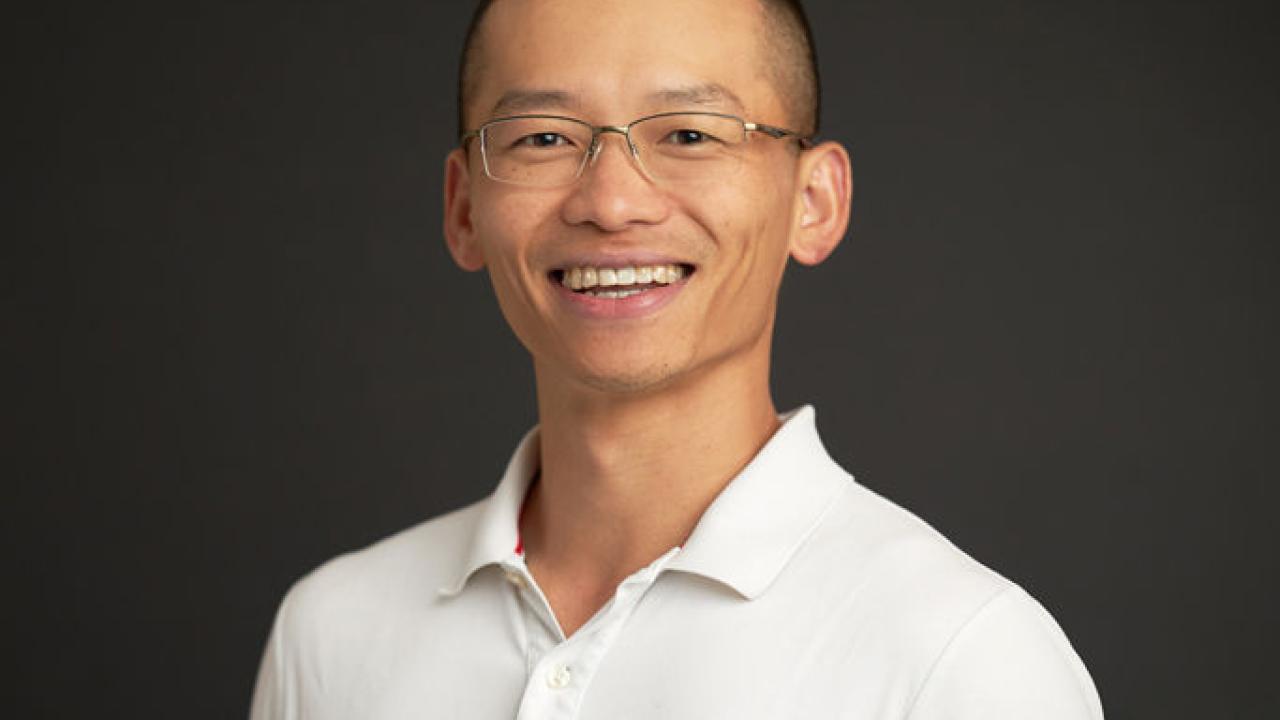
The First Summa and Awwiller Postdoctoral Fellow, Dr. Xiaochuan Tian, Spearheads Geohazards Mitigation
The inaugural Summa and Awwiller Postdoctoral Fellow of the Department of Earth and Planetary Sciences at UC Davis, Dr. Xiaochuan Tian, will break ground in research of our home planet’s topography evolution and geohazard mitigation starting this October. Investigating the “Ups and Downs of the Northern California Forearc”, Xiaochuan will collaborate closely with leading researchers in the geosciences, department Chair Dr. Magali Billen and Vice Chair Dr. Michael Oskin.
“We’re hoping to gain insights into what has controlled the spatial and temporal evolution of tectonic shifts of Northern California’s forearc, and estimate it’s future changes,” said Dr. Tian. Together with Dr. Tian, the research team will explore the impact of the Mendocino Triple Junction on crustal thickening, and the long-term evolution of geological features that can hold significant implications not just for regional geohazards but similar tectonic settings globally.
Triple junctions are locations where three plate bounding faults meet. Off the coast of California, the Mendocino Triple Junction marks the point where the San Andreas Fault meets the Cascadia Megathrust and the Mendocino Transform Fault. This meeting point was off the coast of San Francisco 10 million years ago but migrated in time and transformed the landscape in its wake. The group will use geophysical computer simulations to investigate how the triple junction migrates, and how these major faults and the surrounding areas respond to stress.
Dr. Tian has devoted his ongoing research to investigating how magmatic and tectonic processes shape past and present geological phenomena such as earthquakes and volcanic eruptions. He hopes to uncover the fundamental principles governing these processes, which are just the initial steps associated with reducing threats that come with Earth’s surface changes and evolution that could occur within a time frame of 100 to 1,000 years.
The Cascadia Megathrust is capable of producing magnitude 9.0 earthquakes – we would feel the shaking from such a large event in Davis. Seismic behavior of the north San Andreas Fault will also be affected by the unique stress state occurring in the wake of the triple junction. Further, the Great Valley is a vital agricultural hub that is separated from the Pacific Ocean by Coast Range. The region has seen slow, vertical motions caused by northward migration of the triple junction.
In addition, research insights drawn from the changes of tectonic features in Northern California’s forearc region may pave the way for understanding geological processes that impact surface formation such as the Great Valley succumbing to ocean inundation or subsidence, however, that time scale extends closer to 100,000 to millions of years.
“These findings may help inform the future topography evolution in the region, which may be useful under the context of sea level rising. However, this is not on a timescale of a few human generations, but tens of thousands of years,” said Dr. Tian.
Building on his ongoing research, Dr. Tian, originally from China and with years of experience in the U.S., has another long-term aspiration: To foster a collaborative global scientific community and enhance international cooperation in the geosciences. To realize this goal, he plans to leverage a community-driven, open-source geodynamic software like ASPECT, alongside multi-disciplinary data. His interdisciplinary approach is inspired by the philosophical parable of the "blind men and the elephant," which highlights the value of collaborative research in achieving a more complete understanding of complex phenomena.
Prior to joining the Department of Earth and Planetary Science, Dr. Tian resided with his family in Boston, where he was a postdoctoral research fellow for the Department of Earth and Environmental Science at Boston College. “This is a great opportunity because I can teach next-gen geoscientists while doing research that advances human knowledge and promotes wellbeing.”
The Summa and Awwiller Postdoctoral Fellowship is supported by the donation of Lori Summa and David Awwiller who stipulated that the fellowship be awarded to postdoctoral researchers “with innovative and cross-disciplinary research.” Meanwhile, Dr. Billen notes that funding opportunities for postdoc fellows are essential to retaining promising early career scientists in academics and they energize the intellectual environment of the department.
The Department of Earth and Planetary Sciences turns its attention to a promising era of discovery and advancement in the geosciences as they welcome Dr. Tian’s expertise as the Summa and Awwiller Postdoctoral Fellow.
